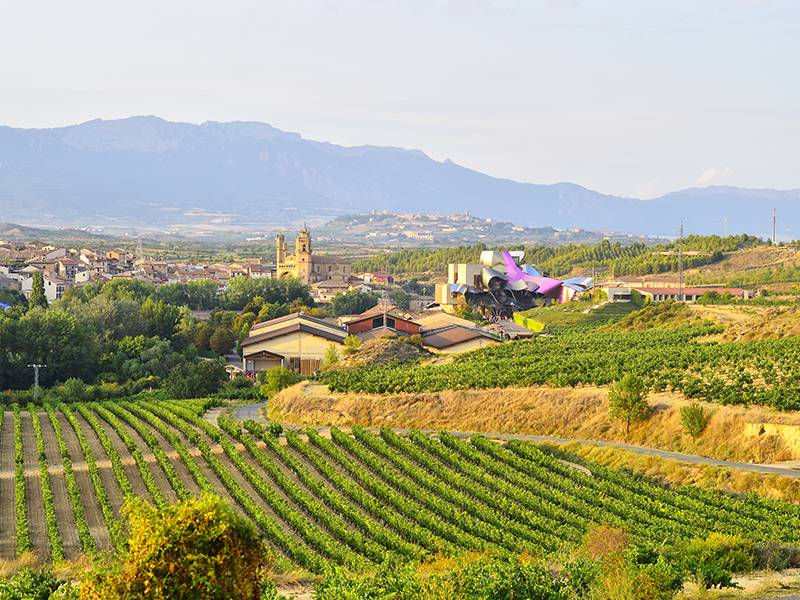And Now for Something Completely Different
- Posted on
- Posted in Blauburger, Castelao, Furmint, Lacrima Morro d'Alba, Scheurebe, Txakolina, wine
- 0

There are over 1300 recognized wine grape varietals in the world, and most people only know a handful. If you are looking to try something a bit different, here’s a list of lesser known varietals we have enjoyed getting to know.
Blauburger
Dr. Fritz Zweigelt was an Austrian viticulturist who spent time crossing various wine varietals in order to create new ones. He named his most successful creation for himself. His second most successful creation is a cross between Blaufrankisch and Blauer Portugeiser called Blauburger. Blauburger should not be confused with the Austrian name for Pinot Noir, Blauburgunder.
There are less than 3,000 acres of Blauburger planted in Austria. Most producers use it as a blending grape to add more color. Only a small handful of producers create a varietal specific version. The Josef Bauer Blauburger has light tannins and medium acidity, with flavors of blackberry and spice. For Pinot Noir drinkers, a Blauburger is a great opportunity to try something different.
Castelão
Castelão is the most widely planted grape in Portugal, though few have ever heard of it. Also known as Pariquita (Portuguese for parakeet), this grape is adaptable to a wide range of climates and is used to make reds, whites, roses and fortified wines. The Venancio da Costa Lima Palmela Reserve is a full-bodied wine with juicy cherry, fig, blueberry, plum, and spice flavors, great for those who enjoy fuller bodied Merlots.
Furmint
Furmint is a Hungarian grape commonly used to make sweet Tokaj dessert wines. However, dry white wines made from this grape have seen increased popularity over the last few years. Furmint is a high acid wine and is a natural alternative for people who like Gruner Veltliner, Sauvignon Blanc or cool climate Chardonnays. The Evolúció Tokaj Furmint has flavors of white grapefruit, lemon and lime.
Lacrima di Morro d’Alba
The Lacrima grape (meaning “tear drop”) may get its name from the shape of the grapes or from the fact that they tend to drip drops of juice when they are ripe. Lacrima has been associated with the Morro d’Alba region for several centuries, but currently less than 2000 acres are grown there. The Vignamato Lacrima di Morro d’Alba has an intensely floral aroma with floral and blackberry flavors. For those who have been drinking Lambrusco and are ready to move to a dryer style red wine, Lacrima di Morro d’Alba can be a good first step. Also, if you need an “I’m Sorry” gift, a bottle of floral Lacrima di Morro d’Alba costs less than a dozen roses.
Scheurebe
Scheurebe (pronounced SHOY-reb-beh), a German grape, is the product of crossing Riesling with an unknown varietal. Currently, less than 5000 acres are planted in Germany. As with its Riesling parent, Scheruebe is a high acid grape capable of producing both sweet and dry wines. The Wirsching Iphofer Scheruebe Kabinett Trocken does have a touch of residual sugar with grapefruit, peach, apricot and lychee flavors. Try this if you enjoy Riesling, Gewurztraminer or Pinot Gris.
Hondurrabi Zuri/Txakolina
Txakolina (pronounced chock-oh-LEE-nah) is a light, acidic and sometimes fizzy white wine style produced in Spain’s Basque country. Sometimes labeled Txakoli (or sometimes both), the wine is predominantly made from a grape called Hondurrabi Zuri. The Talai Berri Txakolina is full of citrus fruit and minerality with a slight effervescence. Txakolina is a great summer wine and perfect with oysters in late-summer/fall. Vinho Verde and Pinot Grigio drinkers should give Txakolina a try.

Comments
Be the first to comment...